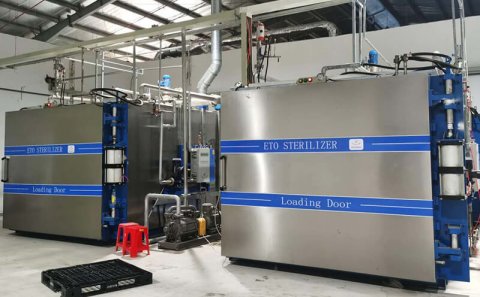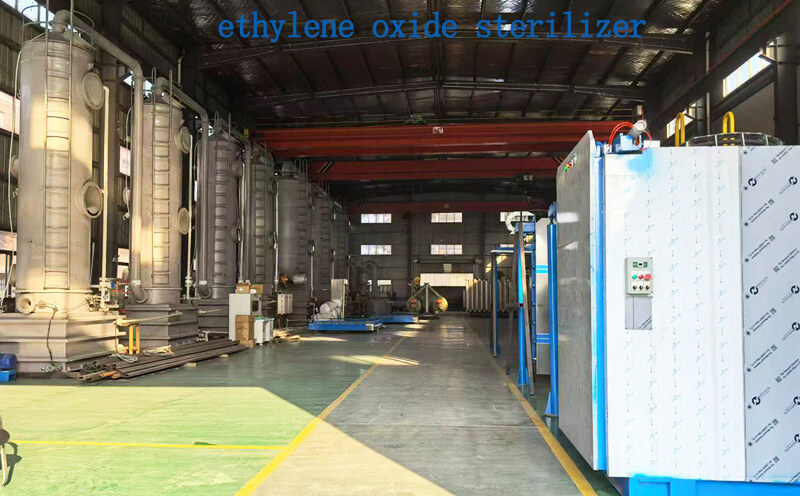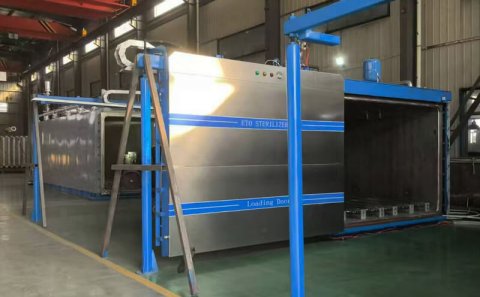
Large scale ethylene oxide sterilizer has been approved
Although the large-scale ethylene oxide sterilizer has developed in the market for many years, it has also won the recognition of many users and been widely used by showing its own strength. However, if you want to achieve a good sterilization effect by using a large-scale ethylene oxide sterilizer, and there will be no frequent problems, you need to pay attention to some details when operating a large-scale ethylene oxide sterilizer.
using large-scale ethylene oxide sterilizer
In order to ensure a good sterilization effect of ethylene oxide, it is necessary to control the temperature and humidity. In addition, since ethylene oxide can dissolve polyethylene, polyvinyl chloride, etc., do not drop ethylene oxide liquid on any article. When using ethylene oxide gas for sterilization, due to the flammable and explosive nature of ethylene oxide, there are high requirements for the external environment when using. In case of emergency, fire prevention measures should be taken and fire-fighting tools should be prepared.
As long as the above mentioned points are achieved, good sterilization effect can be achieved not only by using large-scale ethylene oxide sterilizer, but also to ensure the safety of operators. Therefore, we must pay attention to these problems and do not have a fluke mentality.
Ethylene oxide sterilization cabinet can be customized
Ethylene oxide sterilization cabinet can also be called ethylene oxide sterilization device. It uses ethylene oxide as a sterilization agent for sterilization, so that some microorganisms can be killed at room temperature to achieve the sterilization effect. At present, it is widely used in hospitals, and its size can be customized according to the needs of customers.
Large Ethylene oxide sterilizer and its application
At present, there are many kinds of ethylene oxide sterilizers used. There are dozens of cubic meters for large containers, 1-10 cubic meters for medium ones and 0-1 cubic meters for small ones. They have different uses.
Large ethylene oxide sterilizer:It is generally used for the sterilization of a large number of processed articles. The dosage is 0.8kg/m3 ~ 1.2kg/m3, and it works for 6h at 55 ℃ ~ 60 ℃.
Sterilization Antisepsis
- 1) The relationship between concentration, temperature and sterilization time: in a certain range, the increase of temperature and concentration can shorten the sterilization time. The parameters of temperature, concentration and time must be selected reasonably when using ethylene oxide for sterilization.
- 2) To control the relative humidity of sterilization environment and the water content of articles: the water content of bacteria and the water content of sterilization articles have a significant impact on the sterilization effect of ethylene oxide. In general, 60% - 80% relative humidity is the best. Too little water content affects the penetration of ethylene oxide and alkylation of ethylene oxide, reducing its sterilization ability; too much water content, ethylene oxide is diluted and hydrolyzed, also affecting the sterilization effect. In order to achieve the ideal humidity level, the first step is to pre wet the sterilizer, which is generally required to be placed in the environment of 50% relative humidity for at least 2 hours; the second step can use humidification device to ensure the ideal humidity level in the cabinet room.
- 3) Attention should be paid to the influence of bacteria external protectors on the sterilization effect: the more organic substances contained on the surface of bacteria, the more difficult it is to kill; organic substances can not only affect the penetration of ethylene oxide, but also consume part of ethylene oxide. It is difficult to kill microorganisms in inorganic salt or organic crystal with ethylene oxide. Therefore, before the sterilization of ethylene oxide, the organic and inorganic pollutants on the articles must be fully cleaned to ensure the success of sterilization.





Sterilization experiment procedure...